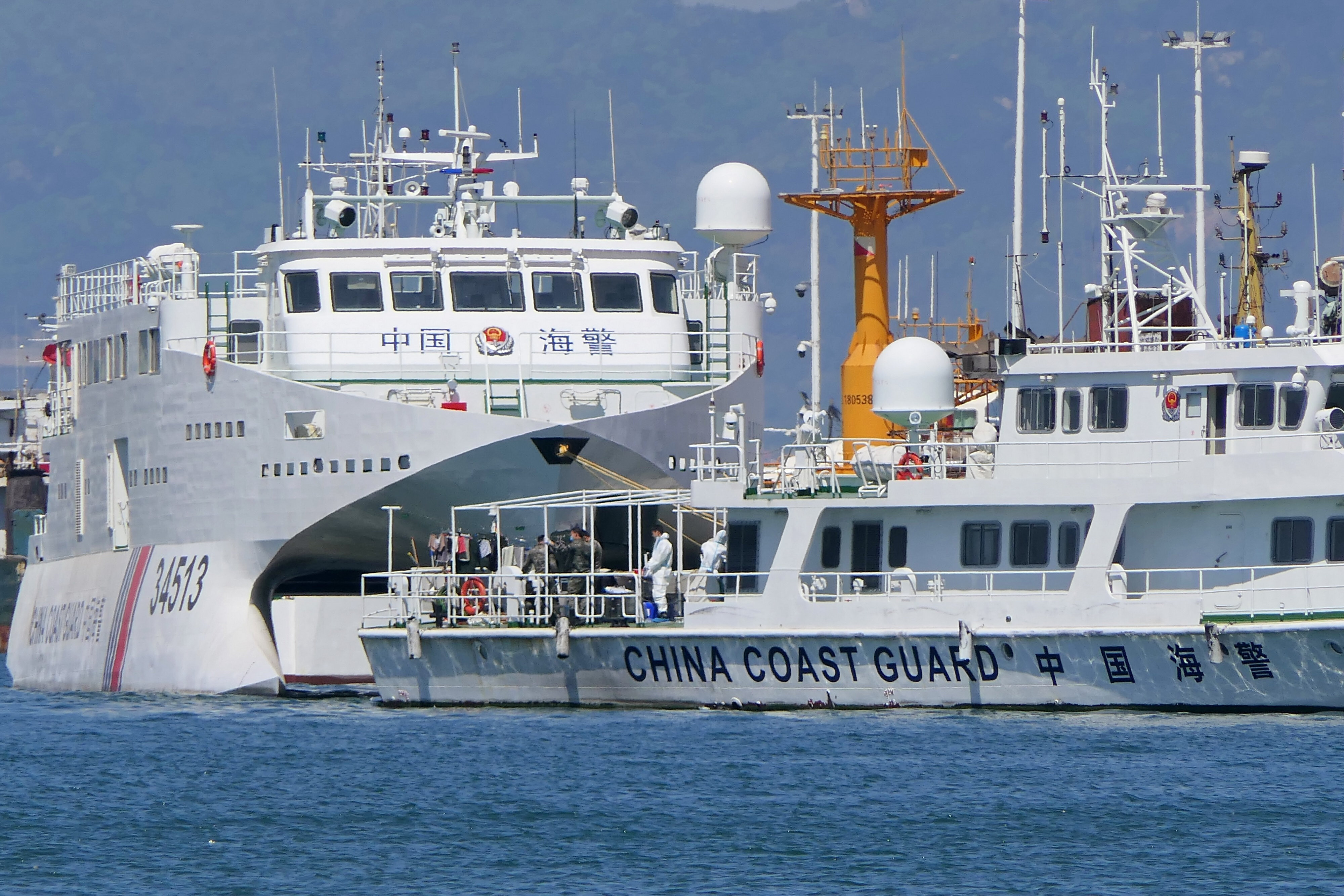South Korea and China
China Expands in the Yellow Sea

Ein Schiff der chinesischen Küstenwache am 28. April 2025.
© picture alliance / CFOTO | CFOTOA tense incident, largely unnoticed by the global public, took place at the end of February in the Yellow Sea, the body of water separating China and Korea. When a South Korean research vessel approached a controversial Chinese steel structure for inspection, it was blocked by a Chinese coast guard ship and three civilian inflatable boats. South Korea called in its own coast guard for support but ultimately had to abandon the inspection.
The incident is reminiscent of the situation in the South China Sea, where China has been asserting territorial claims for years through artificial islands and military presence. Now, there are fears that similar confrontations could increase in the Yellow Sea. The recent events have heightened tensions between South Korea and China, with no solution in sight.
At the heart of the dispute are large steel installations China has been constructing in contested waters. According to the U.S.-based think tank SeaLight, these are large fish farms named Shenlan 1 and Shenlan 2, launched in 2018 and 2024. A massive supply platform, reportedly built from a repurposed oil rig, has also been installed nearby. China’s structures are up to 100 meters long and 80 meters wide.
South Korea Demands Relocation
Until recently, South Korea had begrudgingly tolerated the constructions. But the February incident prompted a shift in tone. At the end of April, the South Korean government formally demanded that Beijing relocate the steel structures to Chinese territorial waters. China rejected the demand, claiming the installations were privately operated aquaculture farms and did not violate any agreements.
Fish farms may sound benign, but analysts are alarmed. There are striking parallels to one of the world’s most geopolitically sensitive maritime areas: the South China Sea, where China initially built artificial islands for supposedly civilian purposes that were later militarized. Where once there were fishing huts, airstrips now exist. Countries like the Philippines and Vietnam feel increasingly threatened by China’s expansionist policies.
Like the South China Sea, the Yellow Sea holds strategic significance. Ships headed to Tianjin—the maritime gateway to Beijing—pass through these waters. China’s Northern Fleet is also headquartered in Qingdao, on the Yellow Sea coast. For South Korea, the region is equally crucial. Seoul sits along the Han River, which flows into the Yellow Sea. The port city of Incheon, South Korea’s second-largest deep-water port, is located here. The U.S. military’s Camp Humphreys—one of its largest overseas bases—is also nearby. Furthermore, the Yellow Sea is believed to hold significant oil and gas reserves.
The region has been a battleground in the past. Key naval battles during both the First Sino-Japanese War (1894–1895) and the Russo-Japanese War (1904–1905) took place here.
China Increases Naval Presence
Territorial claims in the economically and politically vital Yellow Sea remain largely unresolved. China asserts the 124th meridian east as its maritime boundary, based on a 1962 agreement with North Korea. However, this line cuts into waters South Korea considers part of its Exclusive Economic Zone (EEZ). Under international maritime law, an EEZ extends up to 200 nautical miles (approx. 370 km) from a country's coast, granting it exclusive rights to natural resource usage.
In 2001, China and South Korea agreed to establish a so-called Provisional Measures Zone (PMZ) in overlapping EEZ claims, with the goal of jointly managing fisheries and refraining from activities like exploratory drilling. Whether China’s fish farm installations comply with this agreement is disputed. Beijing did not notify Seoul before constructing them.
China isn’t only exerting pressure through construction, it’s also ramping up its military presence. According to South Korean military sources cited in the press, Chinese warships entered disputed or South Korea-claimed waters over 330 times in the past year. By mid-April this year, over 100 such incursions had already occurred.
These tensions are intensifying during a phase of political instability in South Korea. President Yoon Suk Yeol was removed from office following the controversial declaration of martial law. New elections are scheduled for June 3. A conservative victory could lead to a tougher stance toward China, while South Korea’s progressive party has traditionally taken a more cautious approach to relations with Beijing.
South Korea’s relationship with China is generally complex. While China is its largest trading partner, deep mistrust persists. China has repeatedly used its economic leverage for political pressure, such as calling for boycotts of South Korean goods.
China’s recent provocations in the Yellow Sea have drawn criticism from both major South Korean political parties. In response, the South Korean parliament’s fisheries committee has proposed a budget of about 60.5 billion won (approximately 41.9 million USD) to address Chinese activities in the PMZ. If approved, the funds could be used to build South Korea’s own structures in the zone.
China has reportedly pledged in talks not to erect additional structures for now. However, Beijing has not issued any written confirmation.
Frederic Spohr heads the office of the Friedrich Naumann Foundation for Freedom in Seoul, Korea.
This article was originally published on May 10, 2025 on t-online.
